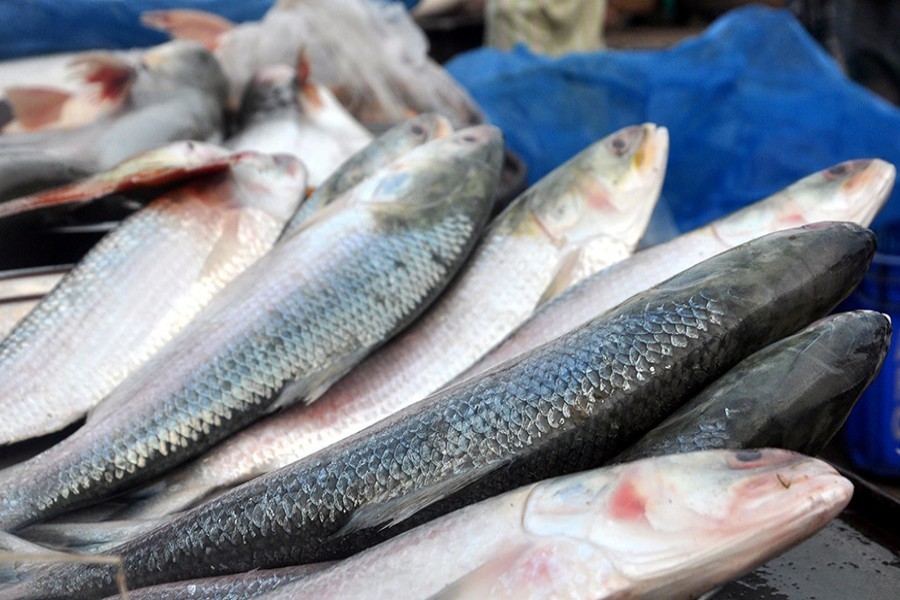The return of hilsha from the species' precarious existence is a highly successful story of science-based conservation. Right now the ongoing 65 days' ban on fishing in the sea is part of the conservation programme. A similar fishing ban is enforced in the country's rivers where hilsha fish come for spawning in their breeding season. The ban along with other supportive action programmes has helped raise the population of hilsha to ensure that the most favourite fish of the Bangalees are no longer absent from their dish. In 1980, production of hilsha was only 200,000 tonnes, now it has gone up to 550,000 tonnes. At a discussion session on achievement in hilsha production and jatka conservation arranged by the Bangladesh Fisheries Research Institute (BFRI) on the occasion of the Golden Jubilee of Independence at a city hotel, researchers claimed that the production can be augmented to 750,000 tonnes provided that jatka (fry or juvenile fish) are conserved well.
Of the many species of fish that visit their place of birth in order to spawn or breed their kinds, hilsha is one of the most prominent kinds like salmon. But there is a difference: usually the mother salmons die after laying eggs in shallow waters but hilsha is not known to have embraced a similar fate. They go back to the sea and repeat the process. This makes the study of hilsha breeding somewhat difficult as the fish never comes to shallow waters. There is still no scientific basis for even deciding the cutting points of the breeding season. However, traditional knowledge of fishermen and some casual studies make a rough estimate of when the breeding season may begin and end. On the basis of which the ban on catching hilsha in rivers is imposed every year. Whether the season starts earlier or not depending on the arrival of monsoon well before the usual time or its late arrival is yet to be known from studies.
Even then what has been achieved by the joint efforts of the BFRI and the government agencies should make the nation proud. Credit goes to the government for its policies and patronage to make this happen. Last year markets were literally flooded with the fish and the price too was quite affordable for even the low-income people. So far the prediction is that production will match, if not surpass, that of the previous year. This is good news for hilsha lovers.
Now the issue that surfaced for the first time in the discussion is that hilsha fish also travel towards Frakka at the time Bangladesh imposes a ban on fishing. But India has no such programme to restrict catching of the fish by its fishermen during the breeding season. This has prompted the researchers here to suggest that India should also be persuaded to impose such a fishing ban. If convinced of the merit of this programme, India should do it in its own interest. So the subject of a joint programme can be raised with India and negotiations may be held as early as possible. Both countries will benefit from such a collaborative venture.


